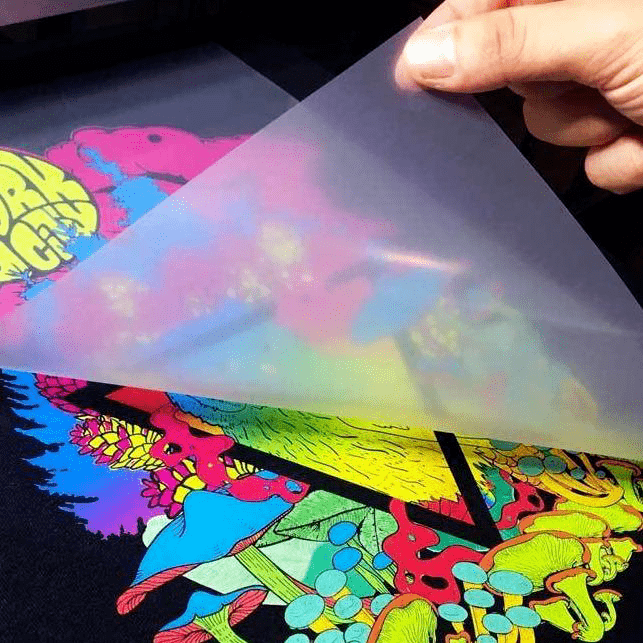Mastering DTF Printing: Idea for Getting Vibrant and Resilient Prints
In the globe of textile printing, attaining vibrant and resilient prints is a desired ability that can boost the high quality of your result. From choosing the best products to adjust print setups and perfecting post-printing completing techniques, there are numerous aspects that can affect the end result of your prints.

DTF Printing Essentials
For those brand-new to the globe of fabric printing, recognizing the fundamentals of DTF printing is vital to understanding this innovative technique. Straight to Film (DTF) printing is a modern technique that entails transferring styles from a special film onto different fabrics utilizing a heat press. Unlike traditional methods like display printing, DTF supplies benefits such as vibrant colors, elaborate outlining, and the capability to publish on varied products like cotton, polyester, and blends.
The procedure begins by publishing the style on a special DTF movie making use of a compatible printer with CMYK or CMYKW ink sets. As soon as the design is published, it is after that cured with a warmth press to create a lasting and long lasting print. DTF printing is known for its capability to replicate complicated designs with high accuracy and shade precision, making it a preferred choice for companies wanting to create personalized apparel, marketing things, and much more.
Picking the Right Materials

Similarly important is the option of the sticky powder. The adhesive powder acts as a bonding representative in between the published style and the fabric, so it has to have solid bond buildings to make sure a sturdy and lasting transfer. Different textiles might need various types of sticky powders, so it is essential to match the powder to the fabric type for ideal outcomes - DTF Printing. By carefully selecting the best materials for DTF printing, printers can improve the top quality, vibrancy, and longevity of their prints.
Optimizing Publish Setups
When intending to achieve the best results in DTF printing, thorough focus to enhancing print setups is critical for guaranteeing premium and exact transfers onto textiles. One crucial element to take into consideration when maximizing print settings is the resolution.
While enhancing the speed can improve performance, it might compromise the final print's quality and shade saturation. Experimenting with different rates and observing the outcomes can assist identify the ideal setup for each print work.
Moreover, adjust shade accounts and making sure appropriate shade management are necessary for achieving constant and exact shades across different prints. By calibrating shade settings and accounts, printers can reduce shade discrepancies and produce uniform outcomes, boosting the overall print top quality and customer contentment.
Preparing Artwork for DTF Printing
Convert the art work to CMYK color mode to ensure that the colors equate accurately from screen to print. Keep in mind to mirror the final style before printing to guarantee that it moves correctly onto the garment. By complying with these steps and paying close interest to the details, you can prepare artwork that is optimized for sturdy and vivid DTF prints.
Post-Printing Finishing Techniques
Executing efficient post-printing finishing strategies is important to boosting the toughness and visual charm of DTF prints link on textiles. Once the printing procedure is complete, applying heat to the published style is essential (DTF Printing). Warmth not only aids in treating the ink but also ensures that the shades are long-lasting and vivid. A warm press maker evaluated the suggested temperature level and stress settings can assist accomplish optimal results.
After heat pressing, removing the family pet movie thoroughly is a critical action. This procedure needs to be done slowly and progressively to avoid any type of damage to the print. When the film is eliminated, the print may require additional healing time to additionally set the ink into the textile. This step assists improve the washability and durability of the print, ensuring it can stand up to multiple clean cycles without fading or splitting.
Furthermore, trimming any type of excess film around the style can provide the final print a professional and clean appearance. Putting in the time to correctly complete DTF prints post-printing can significantly affect the overall high quality and long life of the fabric layout.

Conclusion
To conclude, grasping DTF printing calls for a thorough understanding web of the essentials, choosing ideal products, enhancing print settings, preparing artwork successfully, and making use of post-printing finishing techniques. By following these methods and ideas, one can achieve vivid and long lasting prints that satisfy their preferred top quality standards. Regular technique and interest to detail are vital in achieving effective results in DTF printing.
From picking the best materials to tweak print setups and improving post-printing ending up methods, there are countless factors that can influence the result of your prints. Unlike typical techniques like screen printing, DTF supplies benefits such as vibrant shades, intricate outlining, and the ability to publish on diverse products like cotton, polyester, and blends.
As soon as the layout is printed, it is after that cured with a heat press to produce a resilient and long lasting print.When aiming to attain the finest outcomes in DTF printing, meticulous attention to maximizing print setups is crucial for ensuring accurate and top quality transfers onto fabrics.In conclusion, grasping why not find out more DTF printing needs an extensive understanding of the basics, choosing appropriate materials, optimizing print settings, preparing artwork successfully, and utilizing post-printing completing strategies.